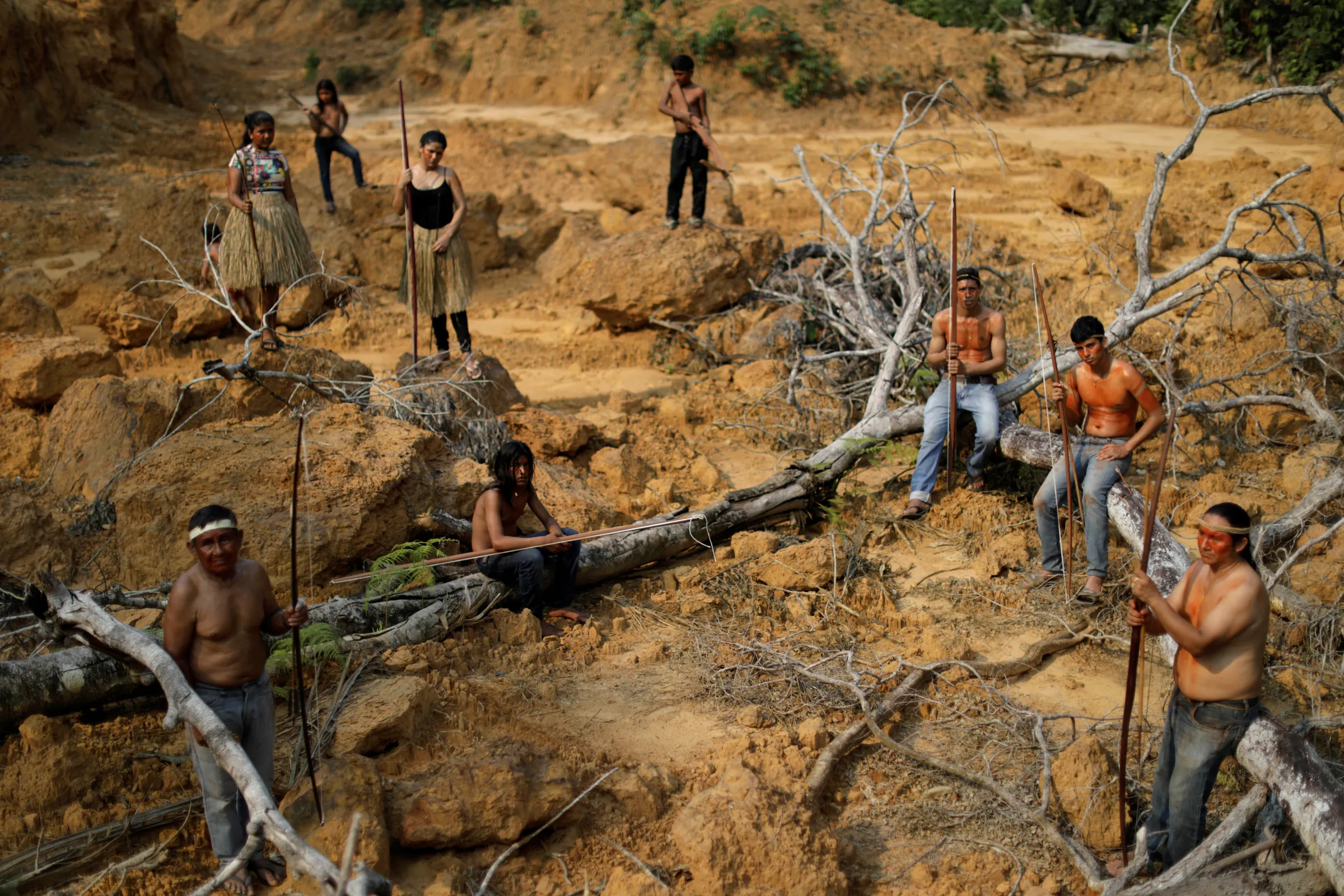Can a new fund give tropical forests a future?

Indigenous people from the Mura tribe show a deforested area in unmarked indigenous lands inside the Amazon rainforest near Humaita, Amazonas State, Brazil August 20, 2019. REUTERS/Ueslei Marcelino
What’s the context?
Brazil is set to launch the TFFF at COP30, a new approach to unlock conservation funding.
Countries around the world are set to contribute $5.6 billion in long-term loans to the Tropical Forests Forever Facility (TFFF), a multilateral fund proposed by Brazil to support global forest conservation.
The announcement was made by Brazilian President Luiz Inácio Lula da Silva at a leaders' summit on Thursday, ahead of the U.N. COP30 climate summit next week when world leaders will meet in Brazil's Amazonian city of Belem.
"The Indigenous Peoples of the Brazilian Amazon receive this announcement with hope but also with the caution of those who have seen too many empty promises," said Valéria Paye, head of the Podáali Fund, the Indigenous Fund of the Brazilian Amazon, in a statement.
The amount is less than a quarter of Brazil's long-term loan target, and a timeline for the fund to become fully operational has not yet been announced.
The TFFF aims to compensate countries that leave tropical forests standing and seeks to raise a total of $125 billion - $25 billion in long-term loans from governments and major philanthropies and $100 billion by selling debt securities to the private sector.
Norway already has committed $3 billion by 2025 to the fund, which aims to use government loans to raise far more private funding, while France said it would consider committing up to 500 million Euros ($579 million), also under specific conditions, according to the TFFF's media office.
Brazil and Indonesia have committed $1 billion each, and Portugal has committed $1 million in loans. The Netherlands committed $5 million for the TFFF secretariat.
In a press briefing following the fund's launch, Brazil's Minister of Finance Fernando Haddad said Germany was expected to announce a contribution imminently.
The British government has said it will not invest in the TFFF, a decision described by Brian O'Donnell, head of the UK-based Campaign for Nature, as a "moral failure."
Policymakers envision the TFFF as a fund combining sovereign and private-sector contributions that would be managed like an endowment, but private investment will likely take years to materialize.
Here is what you need to know.
What is the TFFF, and where would the money come from?
In the Amazon and elsewhere, a hectare of forested land is often worth less money than deforested land where cattle or crops can be more easily introduced.
By better valuing the services that forests provide to natural systems and society - which include cooling the climate, regulating water flow, storing planet-heating carbon and supporting biodiversity - the TFFF would incentivise countries to protect forests.
The fund would seek to raise money through loans from countries, philanthropies, the World Bank, nonprofit organisations, market investors and others, fully repayable within 30 to 40 years.
That money would be invested in assets such as higher-yielding emerging market sovereign bonds, with some of the returns given to investors. Another share would be distributed to 73 countries that collectively hold 1 billion hectares of tropical forests.
Each year, those countries would be paid $4 for each forested hectare. Countries that lose forests would lose money, and those that recover forests would be paid more.
But the planned structure could make disbursements overly reliant on high returns from risky investments, and a potential default could topple the fund, according to Aidan Hollis, an economics professor at the University of Calgary, and policy analyst Alexander Matthey.
Are there other forest-protection funding schemes?
Other mechanisms include direct donations to funds such as the Global Environment Facility or Brazil's Amazon Fund as well as bilateral pacts between countries like Norway and Indonesia.
Other vehicles include carbon-credit initiatives, in which landholders or governments are paid for the carbon captured in forests, and debt-for-nature swaps, in which creditors allow indebted countries to redirect some repayments to conservation.
According to Reuters, a separate initiative to be discussed at COP30 expects to mobilise more than $2.5 billion over the next five years to specifically protect forests of the Congo Basin.
How is the TFFF different, and at what stage is it now?
The TFFF could raise money already available in the market by attracting investors interested in environmentally friendly funds, Brazil's government argues.
Countries with tropical forests would be provided a stable stream of money, as long as they demonstrate transparent public finance management, that they are able to track deforestation and that it is under control. Governments would invest in forest conservation as they see fit.
Brazil has proposed channeling 20% of returns to Indigenous and other local communities, or $800 million annually, which is more than double the amount these communities received to protect land in 2024, according to the Rights and Resources Initiative, a global coalition.
What are the risks if tropical forests remain unprotected?
Scientists say the impact of degradation and climate change has made vast swaths of the Amazon, the Congo Basin and other rainforests drier and more vulnerable to fires, which exacerbates climate change.
Last year, a record drought in the Amazon led to fires that burned twice the amount of forested areas in Brazil than the previous record, according to 40 years of data from mapping consortium MapBiomas.
This story was updated on Friday November 7, 2025 at 16:07 GMT with details throughout.
(Reporting by Andre Cabette Fabio; Editing by Anastasia Moloney and Ellen Wulfhorst.)
Context is powered by the Thomson Reuters Foundation Newsroom.
Our Standards: Thomson Reuters Trust Principles
Tags
- Extreme weather
- Fossil fuels
- Climate policy
- Loss and damage
- Forests
- Climate solutions


















